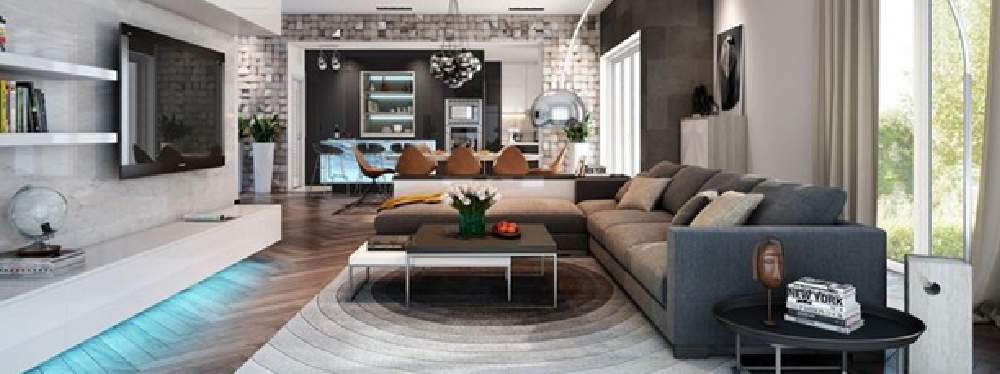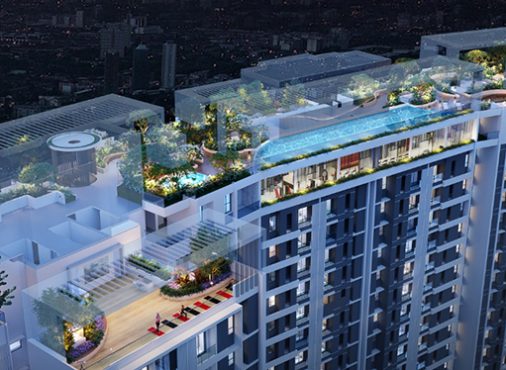Design affects how we live every day. When you walk into a well-planned apartment or a public space that feels inviting, you notice that every detail has been carefully considered. In luxury real estate, smart design turns a house into a home that is both comfortable and practical.
In this blog post, we look at how thoughtful design improves urban living by making spaces more comfortable, connected, and sustainable. We will explore what makes design effective, how it influences lifestyle and current trends, and what the future might hold for urban living.
What Makes Design Thoughtful?
Thoughtful design is built on a few simple ideas that help make spaces both attractive and practical.
Making the Most of Space
In cities, we need to be clever with space. Good design creates homes where every corner serves a purpose without feeling cramped. Consider a living room with hidden storage that doubles as a workspace or furniture that adapts to different needs throughout the day.
When spaces can transform smoothly between activities, they support the varied demands of city life. Built-in shelves, fold-away desks, and multi-use furniture make this possible without sacrificing style or comfort.
Combining Looks with Practicality
Design should do more than just look good. It needs to work well for daily life. Modern buildings often use clean lines and simple shapes that serve real purposes. Large windows, for example, don’t just create an elegant look – they fill rooms with natural light and reduce energy costs.
When spaces are thoughtfully arranged, they’re easier to maintain and more pleasant to live in. The best designs find ways to make practical features feel natural and appealing.
Choosing Sustainable Options
Today, environmental care matters more than ever. Good design considers our impact on the planet. Think about homes that use natural light and airflow to reduce energy use or materials that last longer and age gracefully.
Green spaces, whether they’re rooftop gardens or indoor plants, make homes healthier while connecting us to nature. These choices help both the environment and our daily comfort.
How Design Influences Lifestyle
The design of a space can change how we feel and work every day. A good design can make life easier and more pleasant.
Improving Comfort and Ease
Picture coming home to a space where everything just works. In well-designed homes, rooms connect naturally to each other. The kitchen flows into the dining area, making meal times simpler.
Small touches, like where switches are placed or how a staircase curves, can make everyday routines smoother. When someone thinks carefully about how people actually live, it shows in these practical details.
Supporting Mental Well-Being
Our surroundings affect our mood and stress levels more than we might realise. Homes with plenty of natural light, open spaces, and calming colours help us relax after busy days. Uncluttered, organised spaces help us think more clearly and sleep better. These design choices aren’t just about looks – they genuinely improve how we feel at home.
Building Community
Thoughtful design can help people connect naturally. Shared spaces like gardens, lounges, or activity rooms give neighbours places to meet and talk. These areas make it easy to host small gatherings or simply enjoy quiet time with others. When buildings include spaces for people to come together, they help create real communities within the city.
Read Also: How to Make a Smart Home in India: Essential Features and Technologies
Modern Trends in Urban Design
Technology and changing lifestyles keep pushing design in new directions. These changes are making our homes smarter and more adaptable. For instance, the global smart home market is projected to exceed $170 billion by 2025, illustrating the rapid pace at which intelligent systems are reshaping our living environments.
Smart Home Technology
Modern homes increasingly include intelligent systems that make life easier. Lights that adjust based on the time of day, temperature controls that learn your preferences, and security systems you can check from your phone – these features are becoming standard.
Open and Flexible Spaces
Today’s homes often move away from rigid room divisions. Open layouts let one space serve many purposes throughout the day. A living area might transform from a morning yoga space to an afternoon home office to an evening entertainment zone. This flexibility particularly matters in cities, where we need our homes to support different activities.
Bringing Nature Inside
City living shouldn’t mean losing touch with nature. More designs now include ways to bring the outdoors in. Living walls, indoor gardens, and large windows that frame city views help maintain our connection to the natural world. Even small touches of nature can make urban homes feel more peaceful and alive.
Looking Ahead: The Future of Urban Design
As our needs change and technology advances, home design keeps evolving.
More Personalised Homes
Future homes will likely adapt more fluidly to individual preferences. Imagine spaces that reconfigure automatically based on the time of day or current activity—for example, lighting and temperature that adjust in real-time to support a morning workout or a cosy evening relaxation session.
Market research indicates that nearly 78% of buyers see value in such personalised automation and like to pay more for smarter homes.
A Greater Focus on Well-Being
Design increasingly considers how spaces affect our health, both physical and mental. Future projects might include more areas for exercise and relaxation. Better air quality systems and natural light will become even more important as we understand their impact on our health.
Continued Innovation
Ongoing advancements in space optimisation, energy efficiency, and technology integration are reshaping urban homes. Innovations such as AI-driven space reconfiguration and smart energy management systems are expected to reduce household energy consumption while creating more versatile living spaces.
Read Also: Smart Luxury Homes in India: A Guide for NRIs
Conclusion
Good design is essential for modern urban living. It makes spaces practical, attractive, and sustainable, improving daily life in many ways. Rustomjee’s projects are a clear example of how careful design can create homes that meet real needs without being overly complicated.
If you are looking for a home where every detail is planned for your comfort and ease, explore Rustomjee’s thoughtfully designed luxury homes and see how smart design can make a difference.
FAQs
- How does design impact the value of a property?
A well-designed property is more comfortable, efficient, and attractive, which can boost its market value and appeal to buyers.
- Can thoughtful design improve mental well-being?
Yes, by using natural light, clear layouts, and calming colours, good design can help reduce stress and improve mood.
- How does Rustomjee incorporate sustainability into its projects?
Rustomjee uses energy-efficient systems, sustainable building materials, and designs that include green spaces to create homes that are eco-friendly and comfortable.








